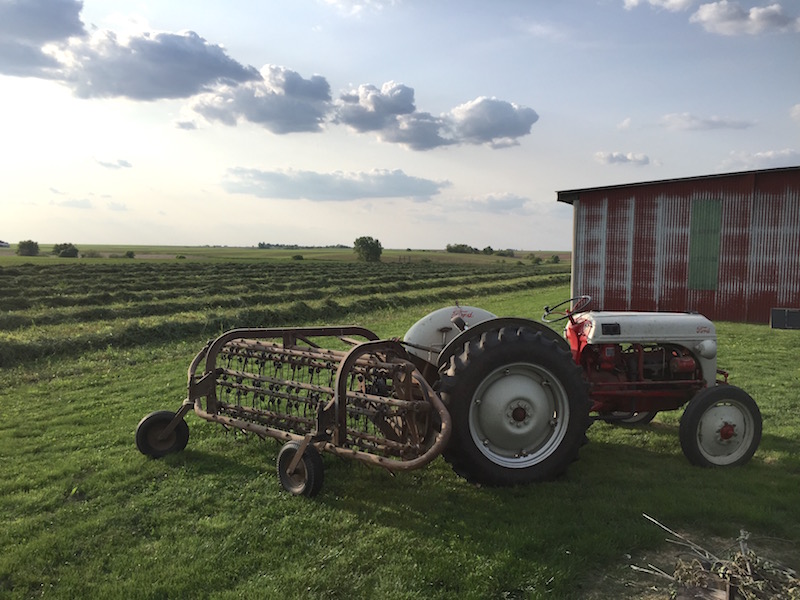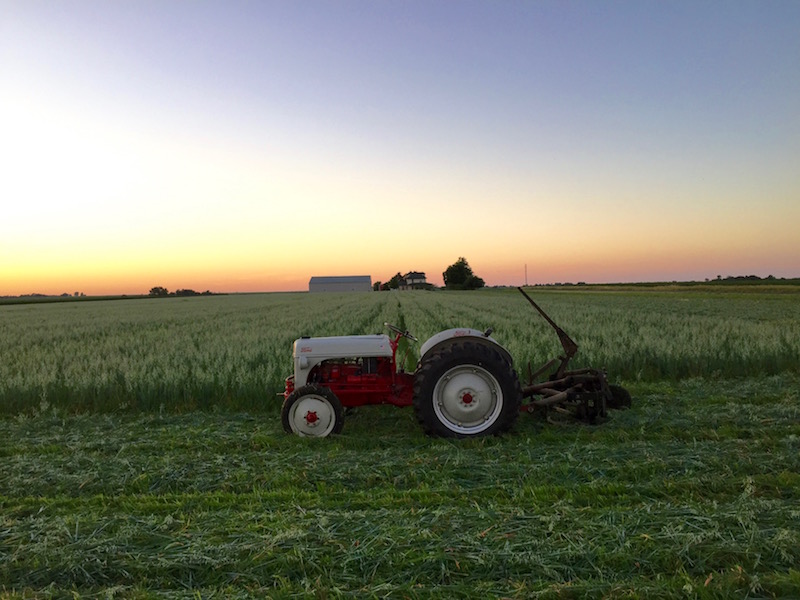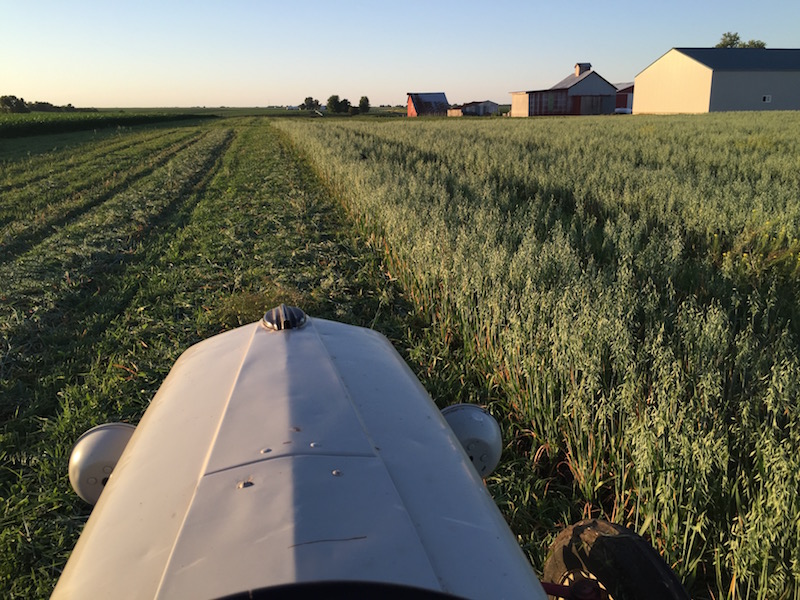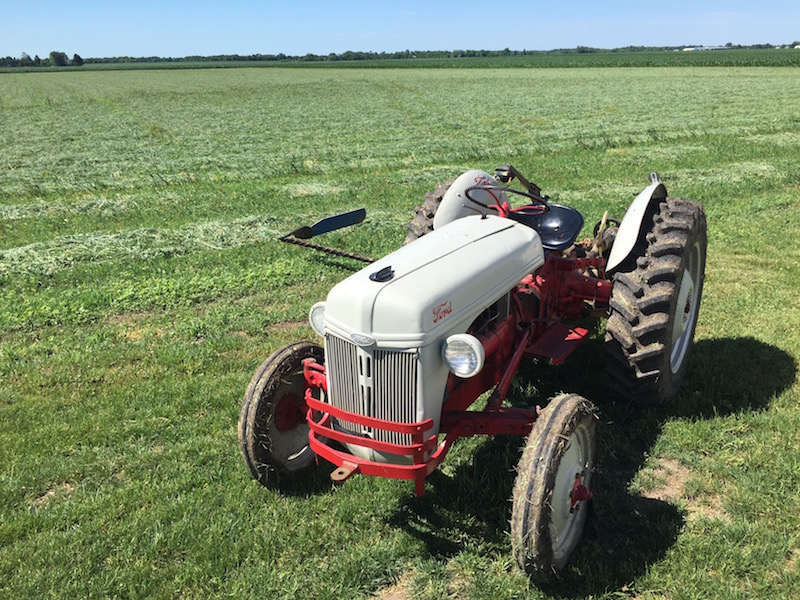[i:15a8f09d37](crossposted in the Ford 8N forum, but thought it relevant to this thread)[/i:15a8f09d37]
I have my hay field divided in two sections this year, one of which is established alfalfa/orchard grass and the other is the same, only seeded this Spring. The oats nurse crop headed out last week, so it was time to take a first cut off that section, and second cut off the established field.
As usual, I used the Hesston 6400 windrower to cut, starting in the older field. I finished that and made it two times around the new field only to run out of gas, mumble, mumble - meant to top off before I started. Naturally, I was at the far end of the field, too.
Walked back, loaded the gas cans in the truck and topped it off. Crank, crank, crank, no fire. Crank, crank, click, click, no battery. Drove back and got the jumper cables and ether. Finally got it started (the old Dodge /6 in the Hesston is balky when hot). Made it one more time around, then started losing power gradually, to the point where it was about to stall. Limped back to the shed and shut it down. No time to troubleshoot, so I got the 8N out and after digging through last year's leftover pasture fencing supplies, was able to back in and hook up the old New Idea sickle bar. Greased it up, and went back to cutting.
After making a few adjustments to the bar angle (kept hitting dirt clods and plugging up), it settled in and did an absolutely fantastic job - I think I had fewer plugs than any time I'd ever used it in the past (maybe it missed me?).
Finished up around 10pm, and other than the bugs, had a nice therapeutic time muttering around the field to the snick-snick-snick of the sickle.
es





